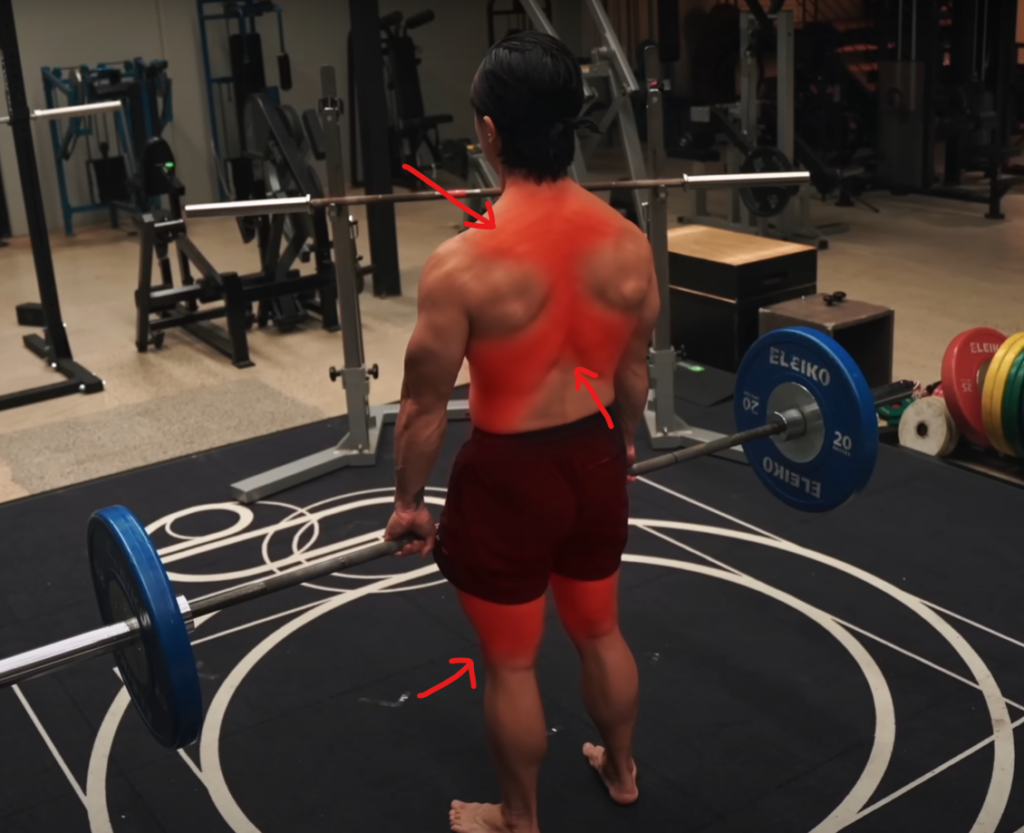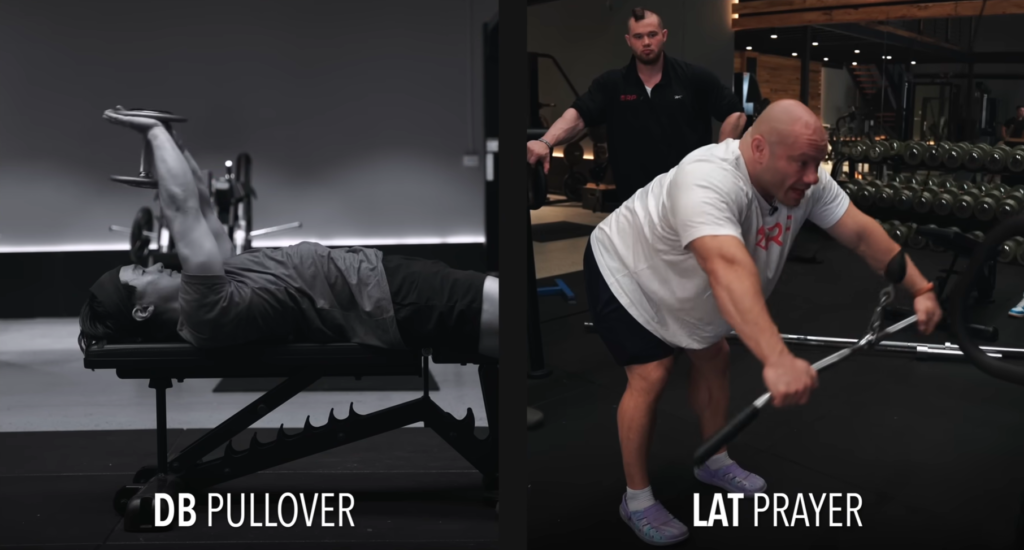A well-developed back isn’t just aesthetically impressive – it’s the foundation of strength, power, and good posture. While the internet is awash with flashy exercises and training fads, building a bigger back comes down to mastering the fundamentals and consistently pushing your limits.
This guide breaks down back training into a practical, step-by-step system. Think of it as leveling up your back workouts, with each stage building upon the last. No matter your experience level, there’s something here for you.
Level 1: Master the Deadlift – Your Back’s Best Friend

At its core, back training is about picking things up off the floor. The deadlift, in all its variations, embodies this principle. It’s a full-body movement that packs on muscle and strength like no other.
Think of the deadlift as a system check for your entire posterior chain – the muscles running along your backside. It primarily targets your spinal erectors, those crucial muscles running along your spine that give your back that thick, powerful look.

But the benefits don’t stop there. Deadlifts also work your lats (the large muscles on your sides), traps (upper back), glutes, hamstrings, and even your core. Mastering this one lift will lay the groundwork for serious back development.

Variations to Explore:
- Conventional Deadlift: The gold standard for overall strength.
- Sumo Deadlift: A wider stance, emphasizing the inner thighs and glutes.
- Romanian Deadlift: Targets the hamstrings and glutes with a focus on hip hinging.
Level 2: Zero in with Pull-Ups – Lat Activation at its Finest

While deadlifts provide a full-body stimulus, pull-ups laser-focus on your upper body, particularly your lats. If you want that sought-after V-taper, pull-ups are non-negotiable.
Pull-ups force your lats to work against gravity, pulling your body weight up. This intense contraction is incredibly effective for building lat size and strength.

Can’t do a pull-up yet? No problem!
Here are a few ways to scale the movement to your current level:
- Band-Assisted Pull-Ups: Use resistance bands to lighten the load.
- Negative Pull-Ups: Focus on the slow and controlled descent from the top position.
- Assisted Pull-Up Machines: Provide assistance while allowing you to perform the full range of motion.
- Lat Pulldowns: A machine-based alternative that mimics the pull-up movement.

Level 3: Build a Base with Supported Rows

Supported rows provide a stable platform, allowing you to focus solely on pulling the weight. This stability reduces the need for stabilization from other muscle groups, allowing you to overload your back muscles even further.
Variations to Try:
- Dumbbell Rows: A classic unilateral (single-arm) exercise for balanced development.
- Chest-Supported Machine Rows: Provides maximum stability and allows for heavy loads.
- Cable Rows: Offers versatility in grip and hand positioning.

Key Tip: Aim to keep your forearms perpendicular to your upper arms throughout the movement. This helps target the back muscles and prevents your biceps from taking over.
Level 4: Progress to Unsupported Rows – Engaging More Than Just Your Back
Unsupported rows, like barbell and dumbbell variations, introduce an element of instability. Now, your core and lower body work overtime to stabilize your torso, creating a true full-body challenge.

Mastering Unsupported Rows:
- Slow and Controlled Eccentric (Lowering): Resist the pull of the weight, feeling the stretch in your back muscles.
- Pause at the Bottom: Eliminate momentum and ensure you’re pulling from a dead stop.
- Controlled Squeeze at the Top: Focus on contracting your back muscles to lift the weight.
Remember: Maintaining perfect form trumps lifting heavy weight. Focus on quality reps and gradually increase the weight as you get stronger.
Level 5: Explore Roundback Variations for a Deeper Stretch

Rounding your back during certain exercises isn’t always a bad thing. In fact, controlled rounding can enhance the stretch in your upper back and spinal erectors, leading to greater muscle growth.
Proceed with Caution: Roundback variations should only be attempted once you’ve built a solid foundation of strength and control with basic rowing movements.
Exercises to Consider:
- Barbell Rows: Allow for a greater range of motion and a deeper stretch.
- Cable Rows: Provide a constant tension throughout the exercise.
- Machine Rows: Offer a safe and controlled way to perform roundback variations.
Level 6: Prioritize the Lengthened Position for Maximum Muscle Growth
Emerging research suggests that training muscles in their lengthened or stretched position might be even more effective for muscle growth than traditional full range of motion training.

This is especially relevant for back training because most back exercises naturally challenge the shortened position (muscles contracted).
Here’s how to apply this principle:
- Partial Reps: After reaching failure on your regular sets, perform a few extra reps in the first half of the movement (where the back is most stretched).
- Machine Selection: Opt for machines that provide more resistance in the stretched position (e.g., the t-bar row).
Level 7: Don’t Neglect Spinal Flexion – Strength in All Planes of Motion

For years, bending your spine during exercise has been demonized. But your spine is designed to move in all directions, and neglecting flexion exercises can lead to imbalances and weakness.
Incorporate these movements to build a resilient and healthy back:
- Jefferson Curls: A controlled spinal flexion exercise that targets the erectors and surrounding muscles.
- QL Side Bends: Works the quadratus lumborum (QL), a muscle responsible for lateral flexion (side bending) of the spine.
Remember: Start light, focus on control, and gradually increase the range of motion and resistance over time.
Level 8: Fine-Tune Your Exercises for Maximum Gains
Now that you understand the fundamental principles of back training, it’s time to explore ways to optimize your exercises for even better results.

Let’s compare two popular lat exercises: the Pullover vs. the Lat Prayer:
- Pullover: Excellent for stretching the lats but loses tension at the top of the movement.
- Lat Prayer: Provides constant tension but lacks stability.
Here’s how to combine the best of both worlds:
- Decline Pullover: Performing pullovers on a decline bench maintains tension throughout a greater range of motion.
- Cable Pullover (Modified Lat Prayer): By performing a lat prayer with a cable machine, you gain stability and constant resistance.
Level 9: Experiment and Discover What Works Best For You
The world of back training is constantly evolving. New research and training methods emerge all the time. While the principles outlined in this guide provide a solid foundation, don’t be afraid to experiment and find what works best for your body.
- Cross-Body Movements: Exercises like cable wood chops and landmine rotations work the back muscles in different planes of motion.
- Vary Your Grips: Changing your grip (overhand, underhand, neutral) can target different areas of the back.
- Listen to Your Body: Pay attention to how your body responds to different exercises and adjust your training accordingly.
Level 10: Consistency is Key – Trust the Process
Building a bigger, stronger back takes time and dedication. There are no shortcuts or magic exercises. The key is to choose a handful of exercises from each level, progressively overload them over time, and stay consistent with your training.
Remember, the most impressive backs are built one rep, one set, and one workout at a time. So, get to work and watch your back transform!
Credit: YT@@coacheugeneteo
